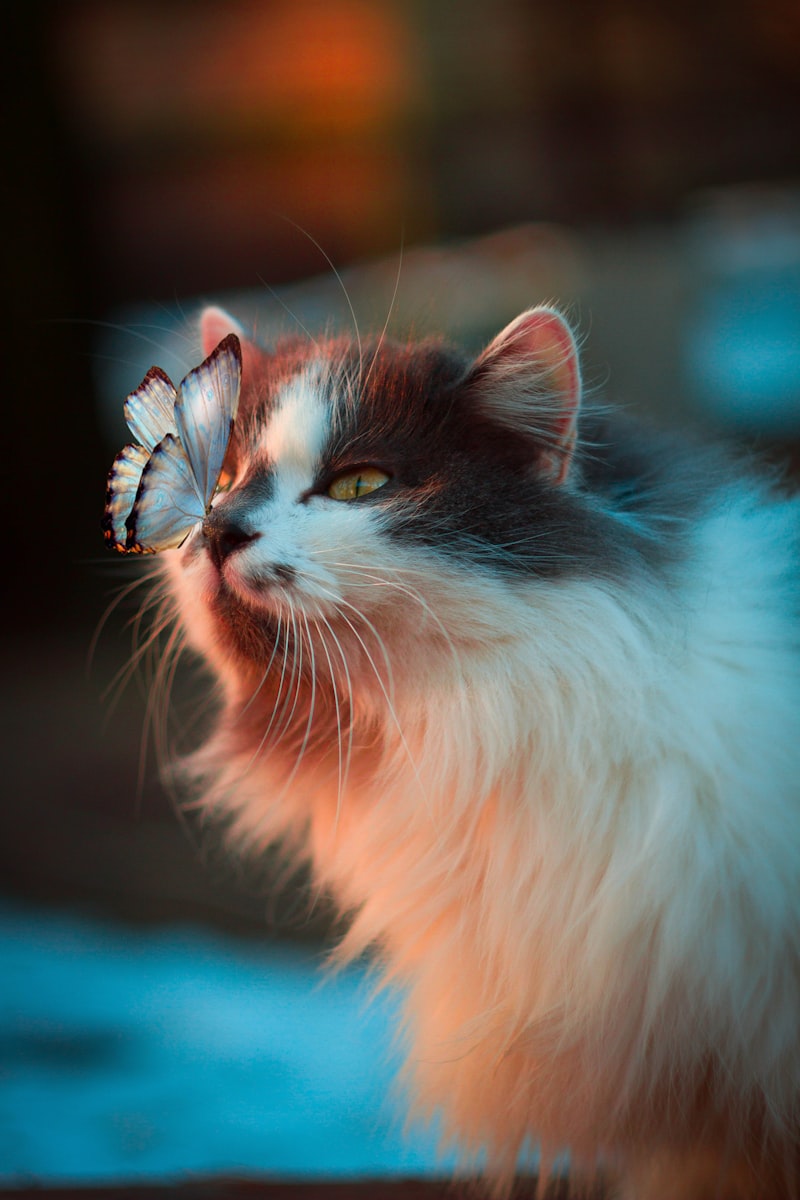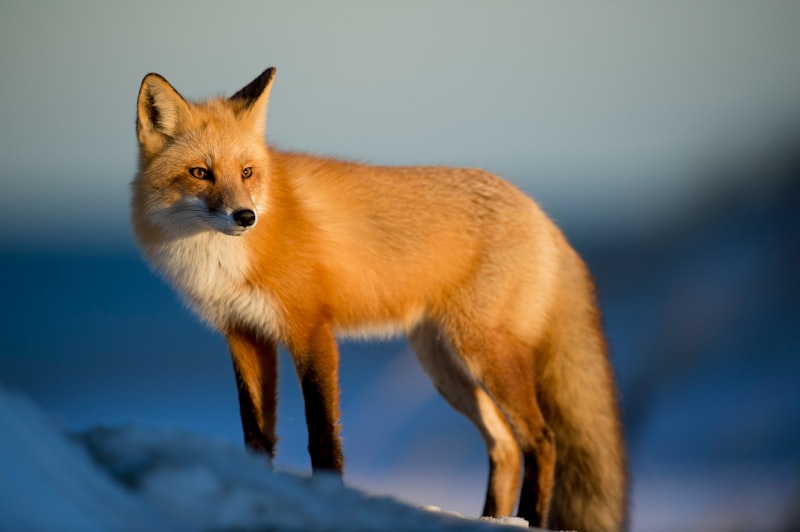Have you ever wondered about the marvels of nature’s design? One of the most fascinating aspects is the incredible diversity in animal teeth. From sharp fangs to bizarre structures, nature has equipped animals with teeth that are not only functional but sometimes downright bizarre.
Let’s start with the star-nosed mole, a creature that looks like it’s straight out of a sci-fi movie. This tiny mole has a nose that resembles a starfish and teeth that are nothing short of unusual. Its teeth are shaped like tiny columns, perfectly adapted for crunching through its diet of insects and worms.
Moving on to the narwhal, often referred to as the unicorn of the sea. Its most distinctive feature is its long, spiraled tusk protruding from its head. But did you know that narwhals also have teeth? In fact, they have only two teeth, and bizarrely, the left canine tooth in males can grow up to 9 feet long, twisting in a helix pattern. Scientists still debate the exact purpose of this tusk, whether it’s for mating displays or breaking ice.
Another contender for weirdest teeth belongs to the babirusa, a pig-like animal found in Indonesia. What makes its teeth unique is that its upper canines grow upwards through the skull and curve back towards its face. It almost looks like the babirusa has horns growing from its snout, though these teeth serve a practical purpose in defense and mating rituals.
Nature’s Dental Oddities: Exploring The World’s Weirdest Animal Teeth
Take the narwhal, often dubbed the “unicorn of the sea,” whose tooth is actually an elongated tusk. This spiraled tooth, sometimes reaching lengths of up to ten feet, is used for various purposes including sensory perception and even breaking through ice. It’s a remarkable example of how teeth can evolve into specialized tools in different environments.
Moving to land, the saber-toothed deer of prehistoric times had elongated canine teeth that resembled sabers, used not just for defense but also in ritualistic battles for dominance. These teeth were crucial in shaping the evolutionary path of these creatures, highlighting the role of teeth not just in survival but also in the social dynamics of their species.
On the insect front, we encounter the stag beetle, known for its intimidating mandibles that males use to compete for mating rights and territory. These oversized teeth are a testament to the lengths organisms will go to ensure their genes pass on to the next generation, illustrating the intertwined relationship between teeth and reproductive success in the animal kingdom.
Even in the depths of the ocean, the vampire squid surprises with its tooth-covered tongue-like organ known as the radula. This unique adaptation allows it to consume both plant matter and small prey, showcasing how teeth can evolve beyond conventional forms to suit the specific needs of an organism’s diet and environment.
From Sabers to Spirals: Unveiling Evolution’s Strangest Tooth Designs

One of the most intriguing tooth designs is the saber tooth, famously associated with prehistoric predators like Smilodon. These elongated, curved teeth were specialized for delivering devastating bites to prey, demonstrating how form perfectly matches function in the world of carnivorous hunters.
Moving away from the sharpness of sabers, spiral-shaped teeth offer a different evolutionary marvel. Found notably in certain marine creatures like mollusks, these spiraled teeth aid in grinding and breaking down food, reflecting adaptations for diverse diets and environments. The intricate spirals not only enhance efficiency in feeding but also illustrate nature’s ability to optimize anatomical structures over time.
In the realm of herbivores, teeth have evolved to handle the constant wear and tear from consuming tough plant matter. For instance, the ever-growing incisors of rodents are designed to gnaw through hard surfaces continually, showcasing adaptation to a specialized diet and lifestyle.
Beyond functionality, tooth designs often serve as evolutionary signatures, indicating the ecological niches and behaviors of their owners. From the formidable weaponry of carnivores to the complex grinding mechanisms of herbivores, each tooth type tells a story of adaptation and survival in the natural world.
As we unravel the mysteries behind these tooth designs, we gain deeper insights into the evolutionary forces that have shaped life on Earth. The diversity of tooth forms not only reflects the incredible adaptability of organisms but also highlights the ongoing process of evolution as species strive to thrive in their respective habitats.
In summary, from sabers to spirals, the spectrum of tooth designs in nature is a testament to the remarkable creativity of evolution. Each tooth type, whether sharp and lethal or spiraled for efficiency, offers a glimpse into the challenges and solutions that have sculpted the natural world as we know it.
Bizarre Bites: Meet Creatures With Teeth That Defy Expectations
Let’s start our toothy tour with the infamous vampire fish, the payara. Resembling a creature from a nightmare, this fish sports two long fangs protruding from its lower jaw, reminiscent of a saber-toothed tiger’s deadly canines. Found in South American rivers, the payara’s impressive dental weaponry helps it seize prey with lightning speed, a true marvel of aquatic adaptation.
Moving from water to land, the star-nosed mole brings a whole new meaning to the phrase “bite-sized.” This tiny mammal sports a bizarre “star” of 22 fleshy tentacles around its snout, which it uses to detect and devour insects faster than the blink of an eye. Imagine having a nose that doubles as a high-speed bug vacuum!
Now, let’s dive into the world of reptilian wonders with the fangtooth snake-eel. Despite its name, this eel isn’t interested in your garden-variety snake. Instead, it sports a mouthful of needle-sharp teeth that are more like daggers, designed to puncture and grasp slippery prey. Just when you thought eels couldn’t get any more intimidating!
For those who prefer creatures that look like they belong in a sci-fi flick, the goblin shark takes the prize. With a long, flat snout and jaws that extend unnervingly far when it feeds, this deep-sea dweller is a testament to the otherworldly diversity of toothy adaptations in the ocean’s depths.
These creatures with their bizarre bites remind us that the natural world is full of surprises. Whether they’re using their teeth to slice through water or snatch a meal in a fraction of a second, these animals showcase the incredible ways evolution has sculpted life forms to thrive in their environments. So, next time you think about teeth, remember that humans aren’t the only ones with dental tales worth telling.
Jaws of Curiosity: The Animal Kingdom’s Most Unusual Dental Structures

Take, for instance, the narwhal, often dubbed the “unicorn of the sea.” While its tusk gets much of the attention, its teeth hold their own mystery. Narwhals possess only two teeth, both located in the upper jaw. Typically, the left tooth remains embedded, while the right one grows into a spiraled tusk, reaching lengths of up to 10 feet. Scientists believe this tusk is used for sensory purposes and possibly for mating displays, making it a unique and enigmatic dental structure.
Moving from the seas to the skies, we encounter the vampire bat, notorious for its bloodsucking habits. Yet, its dental structure reveals a fascinating adaptation. Unlike typical carnivorous bats, vampire bats possess razor-sharp incisors capable of making small, precise cuts into their prey’s skin. These incisors are so sharp that their bites often go unnoticed until after the bat has fed, showcasing a remarkable adaptation for stealthy feeding.
On land, the star-nosed mole boasts an extraordinary dental feature. While its teeth themselves are fairly ordinary, it’s the star-shaped organ around its snout that sets this creature apart. With 22 fleshy tentacles packed with touch receptors, the star-nosed mole uses this unique appendage to navigate and identify prey in its underground habitat. This adaptation demonstrates how dental structures can extend beyond just teeth, playing crucial roles in an animal’s survival and sensory perception.
These examples highlight the diversity of dental adaptations across the animal kingdom, each shaped by evolutionary pressures and environmental demands. From the depths of the ocean to the depths of the earth, animals continue to surprise and inspire with their remarkable dental innovations, reminding us of the boundless wonders waiting to be discovered in nature’s jaws of curiosity.
Beyond Fangs: Creatures That Use Teeth for More Than Just Chewing
When we think of teeth, the first image that comes to mind is often that of chewing and grinding food. However, in the animal kingdom, teeth serve purposes far beyond mere mastication. From defense mechanisms to tools for survival, teeth play diverse and crucial roles across different species.
Take the narwhal, often referred to as the “unicorn of the sea.” Its most striking feature is a long, spiraled tusk extending from its upper jaw. Initially thought to be a sensory organ, it’s now believed the tusk helps with mating rituals and even breaking ice to create breathing holes in the Arctic waters.
Then there’s the beaver, renowned for its sharp incisors. These teeth are not just for gnawing through wood but also for building dams and lodges essential for shelter and protection. Their teeth grow continuously throughout their lives, ensuring they can continuously maintain their habitats.
Moving onto the vampire bat, its name alone invokes images of blood-sucking. Equipped with razor-sharp teeth, these bats pierce the skin of their prey to access blood meals. Their teeth are adapted not only for feeding but also for sensing the blood vessels under the skin, enabling precise and efficient feeding.
In the reptile realm, the venomous snake’s fangs are its deadliest asset. These specialized teeth inject venom into their prey, paralyzing or killing them almost instantly. Fangs are not just weapons but tools that ensure survival by securing food and defending against predators.
Lastly, consider the African elephant, the largest land mammal. Its tusks, elongated incisor teeth, serve multiple functions. From digging for water to stripping bark from trees, tusks are indispensable tools for these majestic creatures.
Teeth, in all their forms across the animal kingdom, showcase nature’s ingenuity in adaptation. They go beyond their basic function of chewing, becoming essential tools for survival, defense, and even social interaction. Each species’ dental adaptations reveal a unique evolutionary path, demonstrating how teeth can be specialized for a variety of purposes beyond our initial perceptions.
Frequently Asked Questions
How do animals with unconventional teeth use them for survival?
Learn how animals with unconventional teeth adapt to survive in their environments. Discover how these unique dental adaptations help them hunt, eat, and defend themselves effectively.
Which animal has the most bizarre tooth structure?
Discover which animal possesses the most unusual tooth structure in the natural world.
How do animal teeth adapt to unique diets and environments?
Learn how animal teeth adapt to different diets and environments, showcasing specialized shapes and structures that aid in chewing, tearing, or grinding food, tailored to specific nutritional needs and habitats.
Why do some animals have teeth that continuously grow?
Some animals have teeth that continuously grow to compensate for wear caused by their diet. This adaptation ensures they can maintain functional teeth throughout their lives.
What animals have the strangest teeth adaptations?
Discover fascinating adaptations in animal teeth with our FAQ on the strangest tooth structures in nature. Explore how animals like the narwhal and star-nosed mole have evolved unique dental features for survival and specialized functions.



